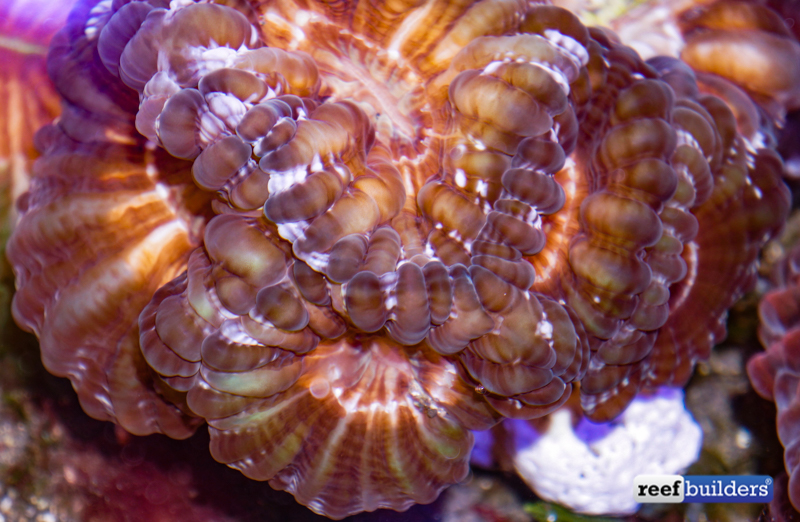Cynarina lacrymalis, ‘modern corals’ or whatever the scientists and cool kids are calling them these days, are one of the longstanding popular corals in the aquarium hobby today. Coming in shades of pink, red, green, brown and all colors in between, this coral is almost always cool to look at, as a single over inflated polyp that looks like big pillow of tissue.
There is very little variation in forms of Cynarina, twin or figure-8 shaped specimens are not all that uncommon, but this 6-headed Cynarina is a crazy outlier of an LPS growth freak. When it opens up it looks like a grossly overgrown trumpet coral with huge and uneven polyps, and it’s the kind of aberration that really gets our attention, especially from a coral that is usually so cooky-cutter.

The super funky Cynarina was obtained by Chris Meckley of ACI Aquaculture who immediately thought of Julian Sprung for being a superfan of all Cynarina, Indophyllia, and all related chunky LPS in this group. Julian was so taken by this coral that he offered his own perspective on this very unusual ‘Hexarina’ coral.
‘It is a pretty spectacular example… I have seen doubles, triples, and even a quad , but this is a whole other sort of thing. In fact, it has skeletal features that leave me wondering about what to call it. Sure it is a Cynarina, but the species is not clear. The septocostae are most similar to what we all now call Acanthophyllia deshayesiana, the sides of the columns (outside the corallites) are like some forms of Indophyllia.’

‘As you know, I am of the opinion that these all belong to just one genus, which for now I assume is Cynarina, but of course that could change. It will be interesting to look at the DNA to see whether this beast represents a hybrid, or whether there may be an additional species within the group. Hybrid seems likely.’
Whatever the source of this six-headed cynarina, it’s a really cool specimen, and a really novel oddity. This coral reminds us of the multi-headed Trachyphyllia but where the origin of that coral probably was from damage and regeneration, we can’t imagine the same mechanism at work in this cynarina since the heads are all so uniform and round. The six headed Cynarina is the closest example we’ve ever seen to a colonial form for this species, but now that we know it’s possible, we’ll definitely be on the lookout for more specimens like it.




